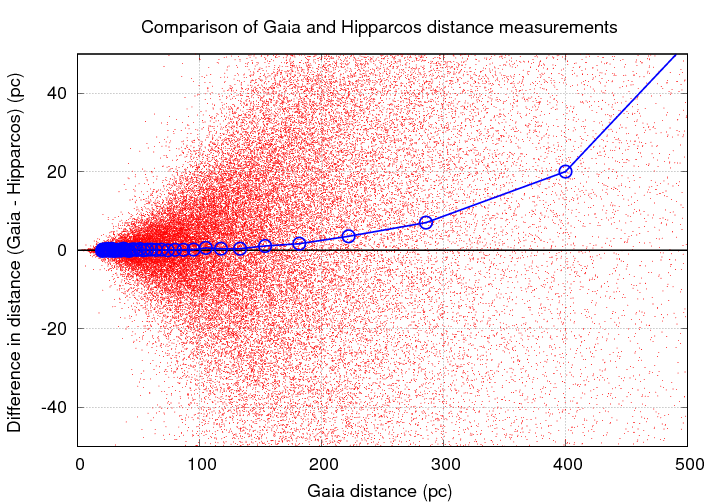

Nearby planets and stars appear to move against the background. We then wait 6 months and look again when we are at the other side of the orbit. We look at the position of nearby objects when we are at one side of our orbit. The same effect can be used as the Earth orbits around the Sun. See how the pencil appears to move against wall behind it. The angle at M is the parallax, the angular separation of the two images. If you close one eye and move your head from side to side. Selsey, Athens, and the Moon (S, A, and M in the diagram) form a long, thin triangle. You can also see this effect by stretching out your arm whilst holding a pencil.

When you move position the distance between the lamppost and the background building changes. You can try this yourself by looking at a nearby lamppost against a building in the background.

The method works by measuring how nearby object appears to move against the background of more distant objects. It can only be used for nearby stars, but it is very accurate. Alison Klesman, " The cosmic distance ladder: How we measure an infinite universe", Astronomy.Parallax is one of the most important distance measurement methods used by astronomers.International Astronomical Union, " Measuring the Universe".Royal Astronomical Society, " Who invented the term "parsec"?".Astro Canada, " Light-yearsThe Astronomer’s Unit for Measuring Distance".The closest stars are about a thousand light years away. There are three types of stars: one AU, one parsec, and one light year, each about 6 trillion miles in diameter. Astronomy Magazine," Why is a parsec 3.26 light-years?" When the distance is at the parallax angle of one arc second, or 206,265 degrees, the distance to a star with a parallax angle of one arc second is 206,265 degrees.NASA, " Imagine the Universe: The Milky Way",.The International Astronomical Union similarly contains a wealth of material on the subject. The Royal Astronomical Society has information and articles on its site relating to parsecs. Today, the International Astronomical Union recommends the use of parsecs over light-years in scientific papers, although the latter is still very common in popular usage. Then around 1913 Herbert Hall Turner had the idea of shortening this to parsec - and the name stuck, even when other, non-parallax-based, methods of measuring stellar distance were developed. The answer seems to be that, when astronomers first started measuring stellar distances using the parallax method, they simply presented their results in terms of "a parallax of X seconds" rather than converting to light-years. Hubble’s law: Why are most galaxies moving away from us? It seems that simultaneous measurements from two.
Parallax angles how to#
Henrietta Swan Leavitt: Discovered How to Measure Stellar Distances The smallest angle one can measure from the ground with an optical telescope is about 0.003 arcseconds. Gaia spacecraft: Mapping the Milky Way like never before So why would anyone want to use parsecs instead? The light-year even has a usefulness that goes beyond simple measurement, because it tells us that when we observe an object X light-years away, we’re seeing as it was X years in the past. It’s simply the distance that light travels in a year, and it’s been in use since at least 1838. By contrast, the light-year is much easier to understand. Parsec vs light yearĪs logical as the definition of a parsec is, it’s still likely to come across as unnecessarily complicated to most people. In fact, real stellar parallaxes are smaller than that, meaning that their distances are always greater than a parsec. So that’s where the parsec comes from: it’s the hypothetical distance at which a star would show a parallax of exactly one second. Measuring that angle and then halving it (because we have two equal and opposite offsets relative to the Sun) gives us the star’s parallax. The star will appear to have moved through a small angular distance relative to the background objects. Then six months later, when the Earth is on the other side of the sun, they take another photograph of the same bit of sky, according to NASA.
Parallax angles Patch#
They take a photograph of a patch of sky containing the star they’re interested in and other, more distant objects such as galaxies. The same principle enables astronomers to measure the distance to nearby stars. If you could measure that angular difference, then knowing the distance between your eyes enables you to calculate the distance to the pencil. The parallax angle is defined to be one-half of the angle between the projected locations of. That’s the parallax effect, and it happens because the angular direction to the pencil is slightly different when seen by your left and right eyes. To gain experience in measuring angles and distances. Parallax can be demonstrated by looking at a pencil with one eye or the other.


 0 kommentar(er)
0 kommentar(er)
